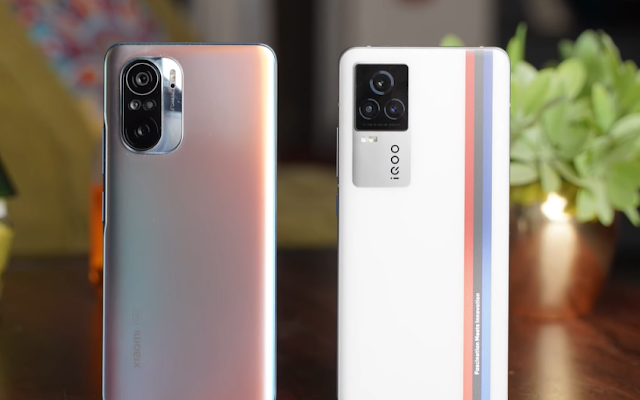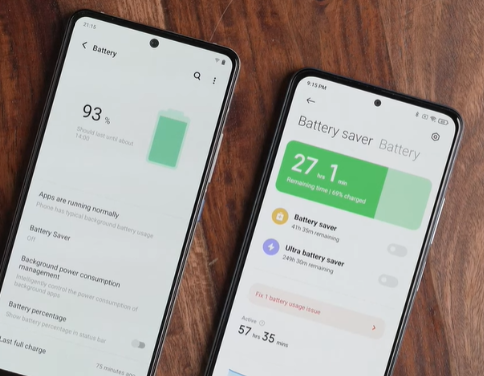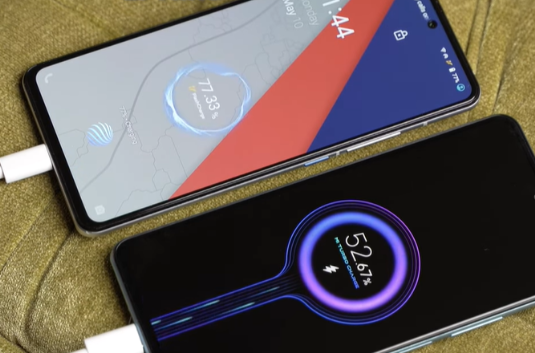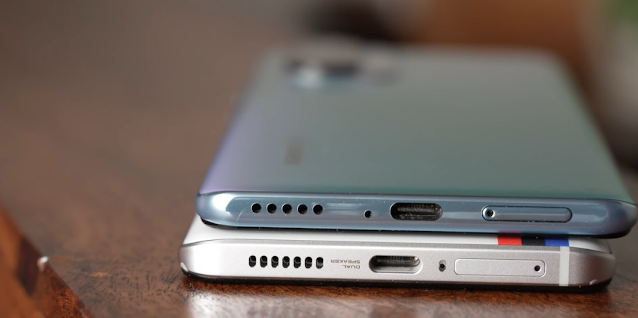A tale of two Snapdragon 888 smartphones! Which is better?
Xiaomi Mi 11X series has gained good momentum in the smartphone market with two of its smartphones that include the Mi 11X (Review) and the Mi 11X Pro. These smartphones provide top-of-the-line specifications at their respective price segment but here the Xiaomi Mi 11X Pro is the more powerful of the two. It has a powerful Snapdragon 888 chipset, 108MP camera, and much more.
The iQOO 7 Legend is a great product made by iQOO and is the best smartphone to date. Like the Xiaomi Mi 11X Pro, it also has a Snapdragon 888 chipset, a triple camera setup, runs on FuntouchOS, and is more intended towards gaming with those monster touch buttons making it a true gaming smartphone. So which one should be your choice considering both are priced the same at Rs.39999?
The iQOO 7 Legend is focused more on gaming and camera whereas the Xiaomi Mi 11X Pro is a good all-rounder smartphone that does good in all scenarios. Both these smartphones are very similar in terms of specifications but do have some differences and it is a tough choice which one to choose. Let’s find out in the full comparison.
Xiaomi Mi 11X Pro vs iQOO 7 Legend Design:
Both the Xiaomi Mi 11X Pro and the iQOO 7 Legend have a glass sandwich design at the front as well as on the back. The Xiaomi Mi 11X Pro has a glossy design at the back with the Xiaomi branding that does catch fingerprints and smudges if you consider the Cosmic Black variant but if you choose the Celestial Silver, the matte finish on it and different color patterns look attractive on the back.
The iQOO 7 legend on the other hand has a very unique design which includes a matte finished white color with three colors namely red, blue and black racing stripes with the Fascination Meets Innovation logo on it which we have seen on a BMW M-sports car and iQOO has partnered with BMW while making this smartphone.
The camera module is a rectangular one that houses quad cameras with the iQOO logo under it. The iQOO 7 Legend is available in this one color variant and this matte finish makes it premium to hold and also gives a unique look. The iQOO 7 Legend weighs around 210grams which makes it slightly heavier compared to the Xiaomi Mi 11X Pro which weighs around 196grams.
To the sides of both smartphones, there is a metallic frame on the iQOO 7 Legend which makes it premium compared to the plastic frame on the Xiaomi Mi 11X Pro and both these have the power button with volume buttons where the power button on the Xiaomi Mi 11X Pro doubles up as a fingerprint scanner.
At the bottom, both have a USB Type-C port, a loudspeaker grill, and a primary microphone. On the top, both have a secondary noise-canceling microphone whereas the Xiaomi Mi 11X Pro has an IR Blaster and another hole for the microphone which also doubles up as a stereo speaker. The Xiaomi Mi 11X Pro provides an IP53 rating which makes it splash and dust resistant which the iQOO 7 Legend lacks.
On the front, both get a single punch-hole camera in the displays with minimum bezels to the sides. Overall, in terms of build and design, both are good on their own but looking from a premium point of view, the iQOO 7 Legend with the premium and unique look makes it attractive but if you want IR Blaster, IP53 rating, and good build quality, then Xiaomi Mi 11X Pro is the one to go for.
Xiaomi Mi 11X Pro vs iQOO 7 Legend Display:
The Xiaomi Mi 11X Pro has a slightly larger display at 6.67-inches compared to 6.62-inches on the iQOO 7 Legend. Both these displays have Full HD+(1080×2400 pixels) AMOLED displays and both have minimum bezels to the sides. The color reproduction and viewing angles are great on both these smartphones. The displayed temperature can also be changed from warmer/cooler on both smartphones.
In terms of brightness, both are equally bright as they can touch 1300nits of peak brightness under direct sunlight but in HDR tests, the Xiaomi Mi 11X Pro can go around 1000nits compared to 900nits on the iQOO 7 Legend. Both these displays have support for HDR10+ content and Widevine L1 so streaming HD content from OTT platforms is bliss.
Both smartphones also have a higher 120Hz refresh rate where the refresh rate on the Xiaomi Mi 11X can scale dynamically between 60Hz, 90Hz, and 120Hz whereas the iQOO 7 Legend can switch between either standard 60Hz or 120Hz. The Xiaomi Mi 11X Pro has a touch sampling rate of 360Hz compared to iQOO 7 Legend’s 300Hz but can hit an instant touch sampling rate of 1000Hz.
The Xiaomi Mi 11X Pro has MEMC technology which means you can upscale the video content while watching. For example, while watching a 60fps video, it can be upscaled to 90fps for a more smooth experience in videos with great animations. But the iQOO 7 Legend uses the haptic engine as pressure-sensitive triggers while gaming so the display also doubles up as a gamer’s tool.
Both these displays have 120Hz refresh rates which means scrolling through webpages, rendering videos, or playing games felt smoother. The iQOO 7 Legend has an optical in-display fingerprint whereas the Xiaomi Mi 11X Pro gets a side-mounted fingerprint scanner that is faster and accurate than the two. Overall, both these displays are great and you cannot go wrong going with either of these.
Xiaomi Mi 11X Pro vs iQOO 7 Legend Performance:
Both the Xiaomi Mi 11X Pro and the iQOO 7 Legend are powered by the latest and greatest Snapdragon 888 chipset which is the flagship chipset found in the OnePlus 9 Pro. This chipset is said earlier is based on a tri cluster setup which has 1×2.84 GHz Kryo 685 Cortex-X1 core with 3×2.42 GHz Kryo 685 Cortex-A78 cores and another 4×1.8 GHz Cortex-A55 Kryo 685 cores built on a 5nm process.
The Snapdragon 888 chipset is coupled with an Adreno 660 GPU so the overall performance and gaming feel very smooth on both smartphones. All tasks like scrolling through webpages, multitasking between applications, rendering videos all were fast and smooth and the 120Hz display makes everything smoother on both smartphones.
All games like Call Of Duty Mobile, BGMI, etc. ran smoothly on both the smartphones at the highest graphics and frame rate settings without any stutter or lag. The iQOO 7 Legend felt slightly smoother and it did provide a slightly better experience with those pressure-sensitive buttons in the display. The Xiaomi Mi 11X Pro is no such either. Both have 8/12GB LPDDR5 RAM and 128/256GB storage.
However, after gaming, both smartphones did get hotter but the iQOO 7 Legend was able to cool down quickly which is due to the larger vapor cooling chamber compared to that of the Xiaomi Mi 11X Pro. The Snapdragon 888 chipset as we saw has some heating issues due to which the Snapdragon 870 has been a popular chipset used in many flagship smartphones.
In terms of benchmarks, the iQOO 7 Legend scored 814094 compared to 769841 on the Xiaomi Mi 11X Pro but in Geekbench 5.1, the Xiaomi Mi 11X Pro scored 1123 and 3523 which is slightly higher compared to 1108 and 3436 on the iQOO 7 Legend. So on an overall basis, the iQOO 7 Legend is slightly better in gaming but performance remains the same on both smartphones.
Xiaomi Mi 11X Pro vs iQOO 7 Legend Software:
Both these smartphones run on different custom skins where the Xiaomi Mi 11X Pro runs on the MIUI 12.5 and the iQOO 7 Legend runs on FuntouchOS 11.1 and both these have Android 11 out of the box. Both these user interfaces have a lot of bloatware present and no ads as such. The MIUI 12.5 is an improved version over its previous versions and the same goes for FuntouchOS also.
There is a large number of third-party applications present in FuntouchOS compared to MIUI 12.5 where now you can uninstall bloatware easily. The advantage that MIUI holds over FunctouchOS is the ability to flash custom ROMs. The FuntouchOS provides more customizations and tweaks compared to MIUI 12.5 and also better software updates compared to MIUI 12.5.
So software, it all depends on personal preference but if you want stable software and not much care about bloatware, then FunTouchOS on iQOO 7 Legend is better but if you want lesser bloatware and a smartphone that has the ability to flash custom ROMs then the Xiaomi Mi 11X Pro is the better one.
Xiaomi Mi 11X Pro vs iQOO 7 Legend Cameras:
Both these smartphones have a triple camera setup where the Xiaomi Mi 11X Pro has a 108MP f/1.8 Samsung HM2 sensor for the main camera, an 8MP f/2.2 ultrawide camera, and a 5MP macro camera which also doubles up as a telephoto camera. On the front, 20MP f/2.5 camera.
The iQOO 7 Legend also has a triple camera setup that includes a 48MP f/1.8 Sony IMX598 sensor for the main camera with OIS, a 13MP f/2.2 ultrawide camera, and a 13MP f/2.5 telephoto camera with 2x zoom. There is a 16MP f/2.0 selfie camera.
The images from both the cameras come out with good details but the one on the Xiaomi Mi 11X Pro has better details and the dynamic range is also better than the iQOO 7 Legend. The iQOO 7 Legend, on the other hand, has a warmer tone of colors but tends to oversaturate the colors whereas the Xiaomi Mi 11X Pro has a more natural look. The iQOO 7 Legend has less noise as it has OIS present.
(Credits: MySmartPrice)
(Credits: MySmartPrice)
At night, the images on the Xiaomi Mi 11X Pro have good details and the dynamic range is equally good on both smartphones. The presence of OIS does help the iQOO 7 Legend as it has sharper details compared to the Xiaomi Mi 11X Pro. Turning on the Night Mode does result in much better images on the iQOO 7 Legend but Xiaomi Mi 11X Pro has sharper details and natural colors.
Without Night Mode:
(Credits: MySmartPrice)
(Credits: MySmartPrice)
With Night Mode:
(Credits: MySmartPrice)
(Credits: MySmartPrice)
The iQOO 7 Legend has a 13MP ultrawide camera compared to the 8MP ultrawide camera on the Xiaomi Mi 11X Pro as the former has a 123-degree field of view which is slightly larger than the 118-degree field of view on the latter and as a result, the images have sharper details on the iQOO 7 Legend with better contrast and dynamic range. The Xiaomi Mi 11X Pro has more amount of noise though.
(Credits: MySmartPrice)
(Credits: MySmartPrice)
At night, the ultrawide camera on the iQOO 7 Legend outperforms the one on the Xiaomi Mi 11X Pro in terms of details and dynamic range. The noise is less on the iQOO 7 Legend though there is edge distortion on both smartphones around the side, the iQOO 7 Legend has less and with the dedicated Night Mode, the iQOO 7 Legend does a far better job compared to Xiaomi Mi 11X Pro.
(Credits: MySmartPrice)
(Credits: MySmartPrice)
The third camera on the iQOO 7 Legend is a dedicated telephoto camera that can do 2x optical zoom and takes images with much better dynamic range and the details look sharper compared to the 2x digital zoom on the main camera of the Xiaomi Mi 11X Pro as it does not have a dedicated telephoto camera but still, the zoomed-in images look good on the Xiaomi Mi 11X Pro.
(Credits: MySmartPrice)
(Credits: MySmartPrice)
The Xiaomi Mi 11X Pro has a 5MP macro camera which also doubles up as a telephoto camera and the images come out with good details and dynamic range. The iQOO 7 Legend uses the ultrawide camera as a macro camera and the details look sharper and the dynamic range is good. The colors look oversaturated on the iQOO 7 Legend and here you cannot find much difference between the two.
(Credits: MySmartPrice)
(Credits: MySmartPrice)
The portraits come out good on both but the Xiaomi Mi 11X Pro has more natural-looking skin tones compared to the iQOO 7 Legend that oversaturates the color. The dynamic range is better on the iQOO 7 Legend compared to the Xiaomi Mi 11X Pro and the edge detection is also better on the Xiaomi Mi 11X Pro but it does crop in a bit to reduce noise to quite a large margin.
In terms of selfies, the Xiaomi Mi 11X Pro with its 20MP camera takes selfies with more natural-looking skin tones but the details also look sharper and the dynamic range is better on the iQOO 7 Legend. The iQOO 7 Legend can also take 2x zoomed selfies and in terms of portraits, the skin tones look natural on the Xiaomi Mi 11X Pro compared to the iQOO 7 Legend and edge detection is good on both.
In terms of videos, both the iQOO 7 Legend and the Xiaomi Mi 11X Pro can take 4K videos at 60fps, but the videos come out with sharper details and better dynamic range on the iQOO 7 Legend and even the videos have better stabilization compared to the Xiaomi Mi 11X Pro videos but when it comes to color saturation, the Xiaomi Mi 11X Pro is slightly better.
The ultrawide cameras on both smartphones can record 4K videos at 30fps and the videos come out better on the iQOO 7 Legend with a larger field of view and the stabilization is also better here. Even the dynamic range and contrast are better on the iQOO 7 Legend. The selfie videos come out better on the Xiaomi Mi 11X Pro but the dynamic range is better on the iQOO 7 Legend.
The portrait videos come out with good details and dynamic range on the iQOO 7 Legend compared to the Xiaomi Mi 11X Pro. The 1080p videos at 60fps on both come out with good details and both use EIS for better video capture. On the front, both smartphones can record 1080p at 60fps videos but here also the iQOO 7 Legend has better dynamic range and sharper details compared to the Xiaomi Mi 11X Pro.
The selfie portrait videos also come out great on both smartphones with good edge detection and here also the iQOO 7 Legend has better sharper details and dynamic range compared to the Xiaomi Mi 11X Pro. So overall, the Xiaomi Mi 11X Pro is the better in terms of color science as it has more natural colors but the cameras are the better on the iQOO 7 Legend.
Xiaomi Mi 11X Pro vs iQOO 7 Legend Battery Life:
The Xiaomi Mi 11X Pro has a 4520mAh battery which is slightly larger compared to the 4000mAh battery on the iQOO 7 Legend. Both these smartphones can easily last for a typical one day with heavy usage with the display set to 120Hz. The Xiaomi Mi 11X Pro will provide slightly better standard screen-on time compared to the iQOO 7 Legend (5.5 hours vs 5.3 hours).
With normal usage and the display set to standard 60Hz, both smartphones easily lasted for one and a half-day and here also the Xiaomi Mi 11X Pro was slightly better as it has a larger battery. The iQOO 7 Legend battery was slightly draining in most of the scenarios compared to the Xiaomi Mi 11X Pro. But when it comes to charging speeds, the iQOO 7 Legend takes the lead.
The iQOO 7 Legend ships with a larger 66W fast charger as it charges from 0 to 100 percent within 35minutes which is very much faster compared to 1 hour 10 minutes on the Xiaomi Mi 11X Pro which ships with a 33W fast charger only. So overall, the battery life is slightly better on the Xiaomi Mi 11X Pro but the charging speeds are better on iQOO 7 Legend, so in battery life, the iQOO 7 Legend takes the lead.
Xiaomi Mi 11X Pro vs iQOO 7 Legend Audio Quality:
Both the iQOO 7 Legend and the Xiaomi Mi 11X Pro have stereo speakers and the sound output is equally good on both but the Xiaomi Mi 11X Pro has better loudness levels and the bass is also better. Both smartphones do lack support for a 3.5mm headphone jack but have Hi-Res audio and Dolby Atmos support that further enhances the sound.
Verdict:
Both the iQOO 7 Legend and the Xiaomi Mi 11X Pro are great smartphones and the cheapest smartphones that are powered by the Snapdragon 888 chipset. There are a lot of similarities between them like both have large 120Hz displays, Snapdragon 888 chipset, triple cameras, and stereo speakers with good battery life. But there are certain differences.
The Xiaomi Mi 11X Pro has a good design, a 120Hz AMOLED display, is powered by the Snapdragon 888 chipset, and the triple camera setup with the 108MP camera does a very good job. The battery life is also very good on the smartphone. But it does come with MIUI 12.5 which has a lot of bloatware and the charger provided inside the box is a 33W fast charger only. The main camera lacks OIS also.
This is where the iQOO 7 Legend comes out victorious as it closes the gap where the Xiaomi Mi 11X lacks. The build and design are great with a unique eye-catching design, a good 120Hz AMOLED display runs on Snapdragon 888 chipset, and is more focussed on gaming with those pressure-sensitive buttons, the battery life is good and supports 66W fast charging, the triple camera setup is also the practical one.
The images from it have better details and dynamic range of the two. There is also OIS present on the main camera. But FuntouchOS also has a lot of bloatware and when compared to MIUI, the custom ROM support is not good at all. So to sum it up, if you want a Xiaomi flagship, then the Xiaomi Mi 11X Pro is a great choice otherwise the iQOO 7 Legend emerges here as the best Snapdragon 888 smartphone of the two.





























